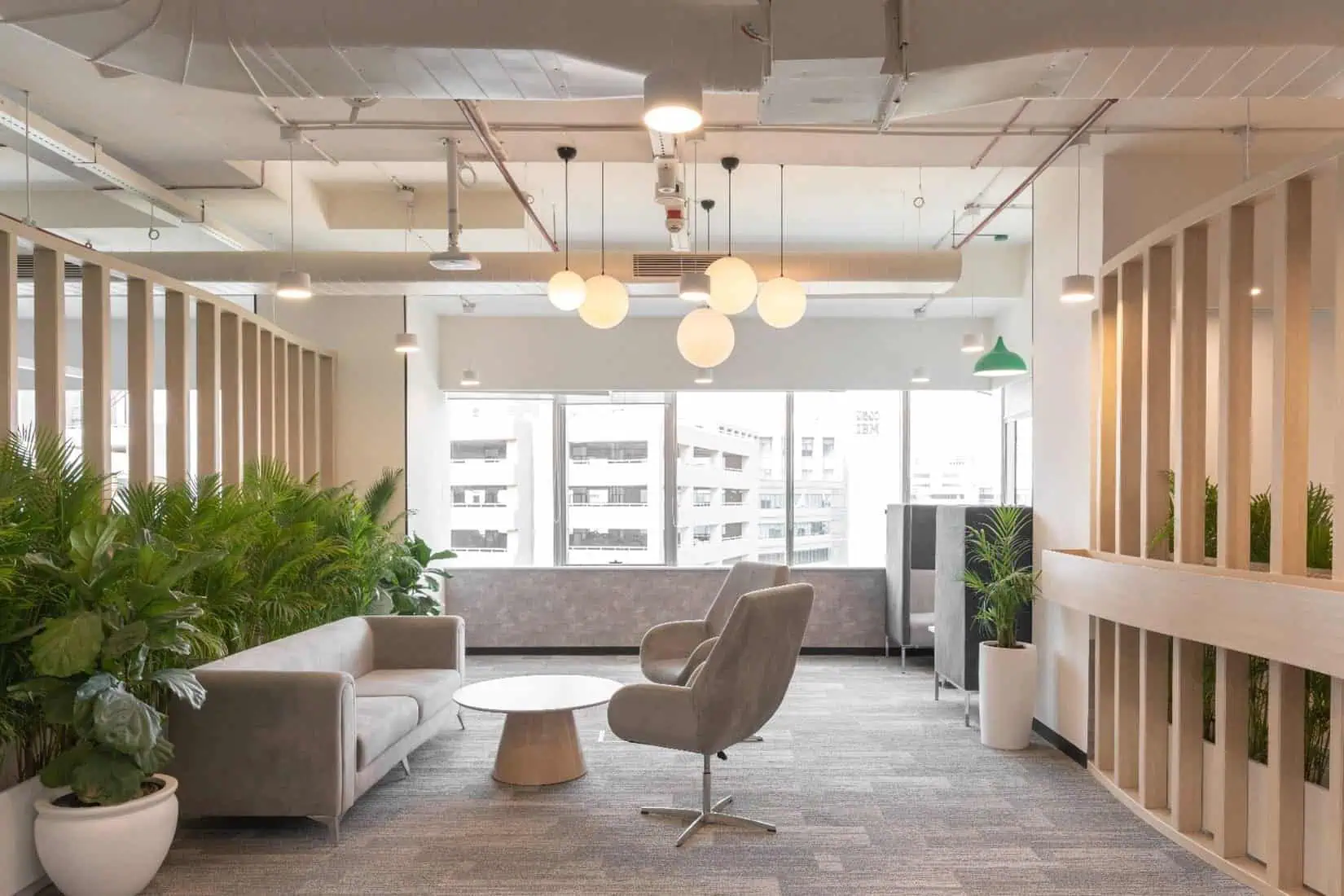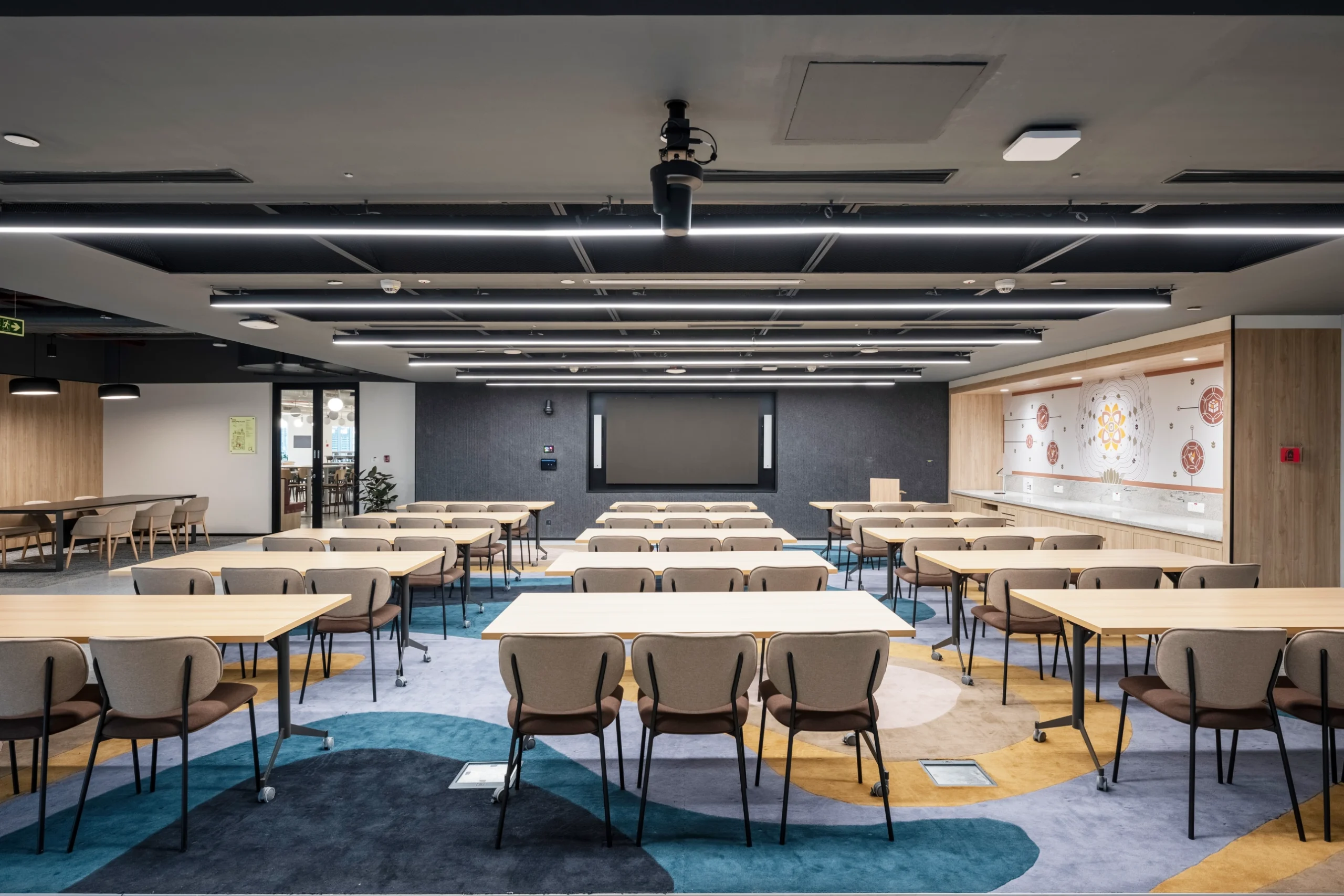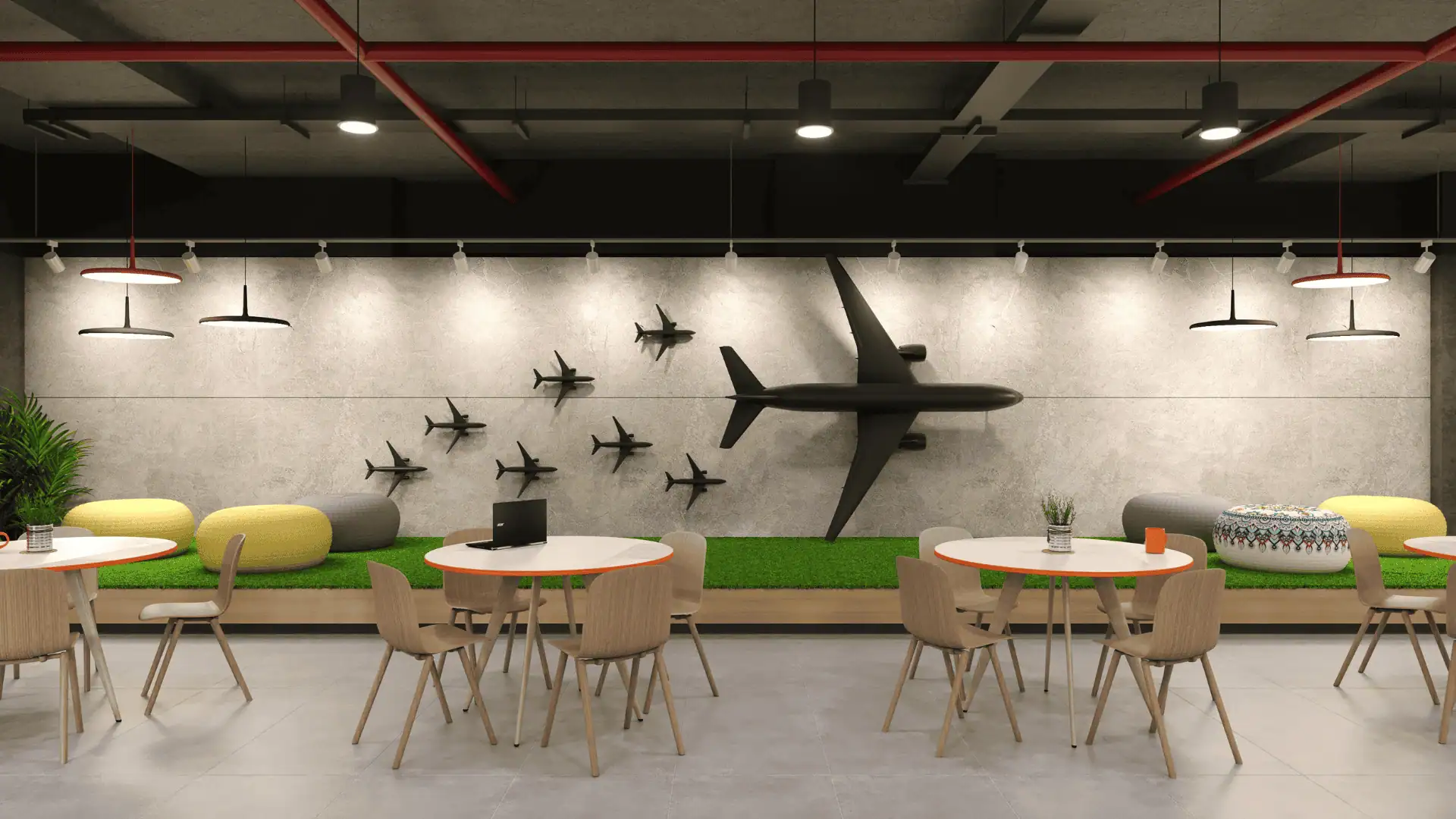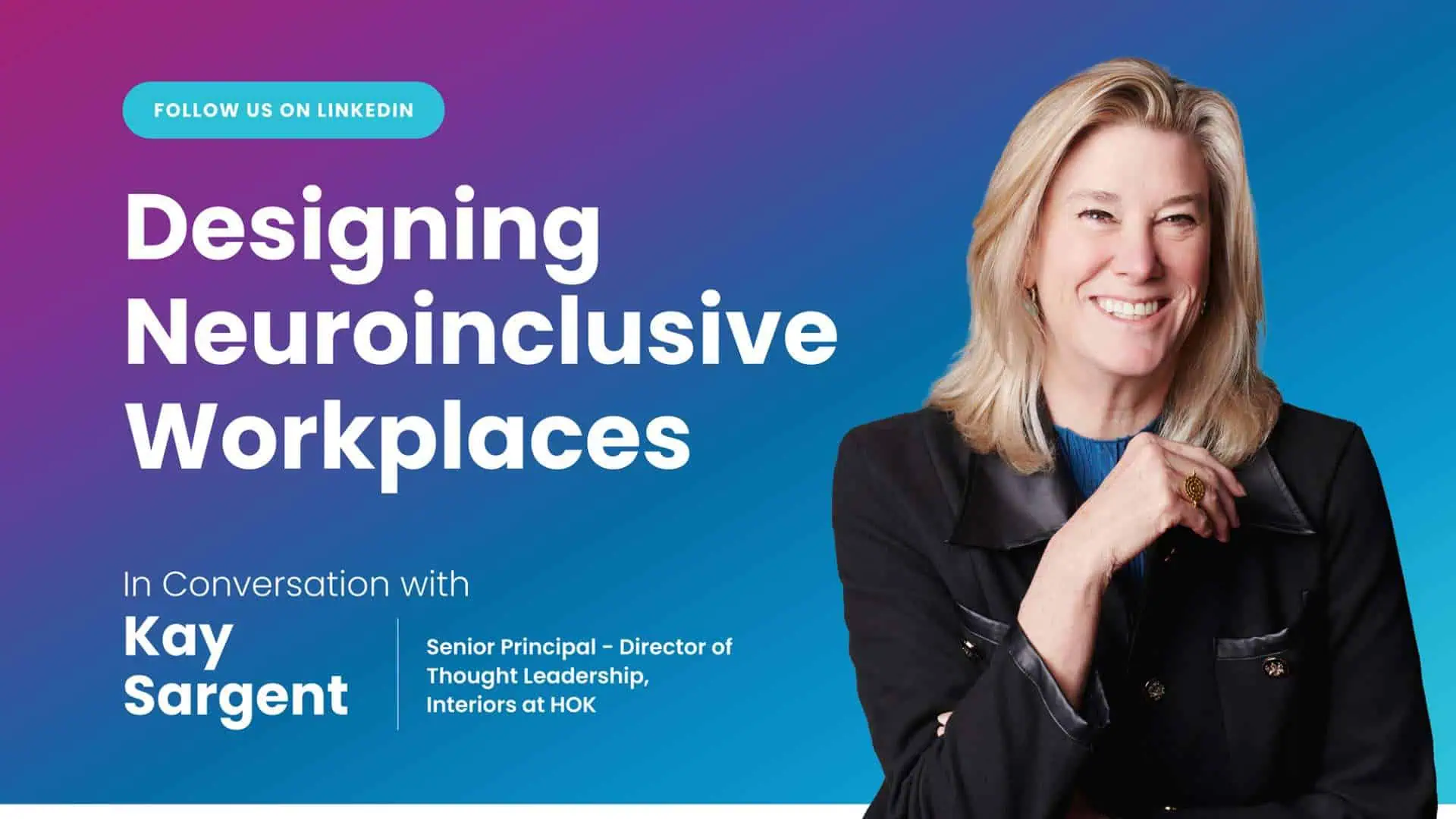In the dynamic landscape of the next-gen workplaces, the ethos of design, functionality, spatial experience and employee expectations have undergone a radical transformation. Thus, the interplay between human-centricity, sustainability, space utility and technological integration has set an ambitious stage to explore the upcoming influencing factors shaping up the design language for 2024 and beyond.
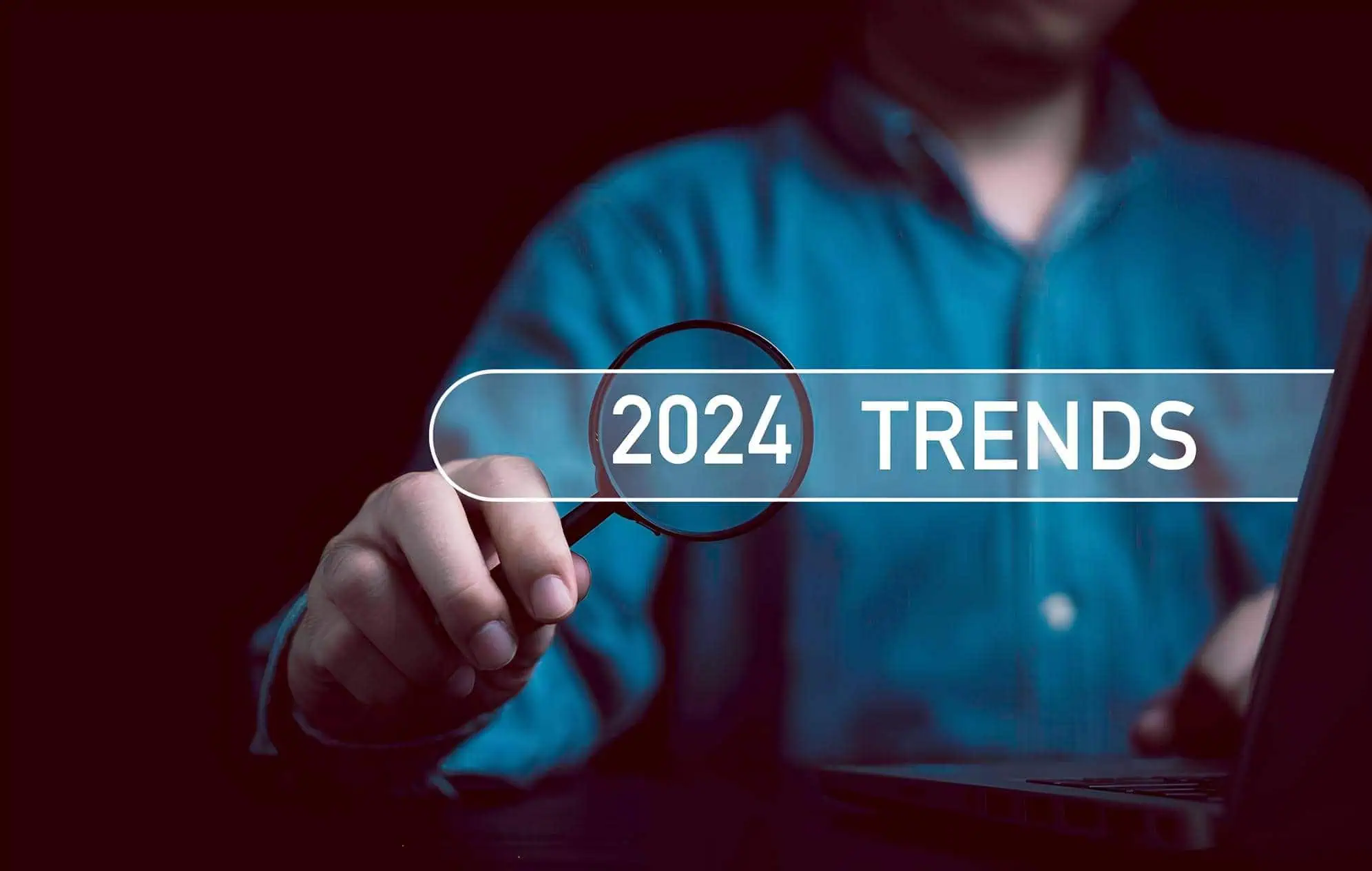
Transformation in Design, Workplace Experience, and Employee Expectations
According to a recent report by Gallup, hybrid workers have largely settled into new work patterns and habits. Thus, 79% of employees consider a sense of purpose an important factor in their job. Studies also suggest that 90% of employees believe that their working environment affects their productivity.
Therefore, with the onset of the year 2024, the trajectory of workplace design has ventured into uncharted territories, driven not only by aesthetic considerations but by the profound evolution in employee expectations and the demand for holistic work environments. This shift, grounded in data and statistics, underscores the pivotal role of workplace design in fostering well-being, collaboration, and adaptability.
In anticipation of these transformations and the burgeoning demand for groundbreaking workplace designs, here’s everything you need to know about the top upcoming trends in workplace design. Let’s explore!
Workplace Design Trends 2024
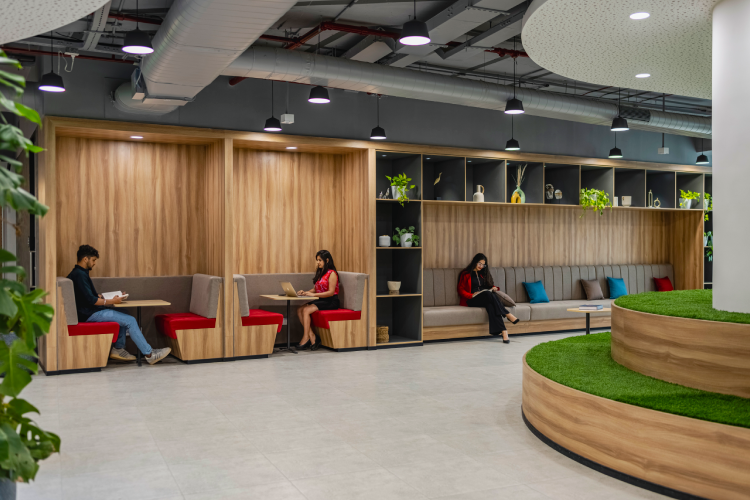
01 Carbon-Negative Design
Carbon-Negative Design revolves around minimizing a project’s carbon footprint by reducing emissions and sequestering more carbon than the project emits, contributing to a net reduction in atmospheric carbon dioxide.
- Business Impact: Enhances brand credibility and attracts eco-conscious clients, potentially leading to increased demand for sustainable design solutions and fostering a positive environmental reputation.
- Employee Experience Impact: Promotes a healthier indoor environment, reducing air pollutants and creating a workspace that positively impacts employee health and well-being.
- Value for Space: Incorporates eco-friendly materials, optimizes energy-efficient systems, and utilizes space for renewable energy sources, reducing overall environmental impact.
- Incorporation in Workplace Design: Integrate sustainable materials, prioritize energy-efficient lighting and HVAC systems, explore biophilic design elements, and implement waste reduction strategies.
02 Restorative Soundscapes
Designing work environments with curated soundscapes using ambient nature sounds, binaural beats, and soothing compositions to reduce stress, enhance focus, and create a calming atmosphere conducive to productivity.
- Business Impact: Increases employee well-being and productivity, potentially reducing absenteeism and turnover rates, thereby positively impacting the bottom line.
- Employee Experience Impact: Creates serene environments that reduce stress, improve focus, and contribute to a more comfortable and enjoyable workspace.
- Value for Space: Designates specific areas for soundscapes to create tranquil zones within the workspace, making optimal use of space and minimizing disturbances.
- Incorporation in Workplace Design: Install sound-absorbing materials, incorporate natural elements like water features or green walls, and utilize sound masking techniques to curate serene soundscapes. For ex: We integrated Moodsonic’s soundscapes to craft a serene and inviting acoustic ambiance in one of our recent projects, elevating the overall atmosphere within the workplace.
03 Holographic Collaboration Hubs
Advanced holographic projection technology integrated into meeting spaces, enabling remote teams to interact in a three-dimensional virtual environment, fostering more immersive and engaging collaboration experiences.
- Business Impact: Facilitates seamless collaboration among global teams, potentially reducing travel costs and increasing productivity through enhanced communication.
- Employee Experience Impact: Enhances connectivity and engagement, creating a sense of presence and inclusivity among hybrid workers, improving overall team dynamics.
- Value for Space: Optimizes space by reducing the need for extensive meeting rooms, creating flexible collaboration areas equipped with holographic technology.
- Incorporation in Workplace Design: Strategically place holographic projectors within meeting spaces, ensuring compatibility with existing technology, and providing furniture that facilitates interactive discussions.
04 Bold Minimalism
Bold Minimalism represents an artistic concept amalgamating the minimalistic essence with striking design components, influenced by contemporary trends in graphic design. This approach centers on uncluttered lines, purpose-driven spaces, and compelling visual expressions, aiming to evoke a feeling of lucidity and intent in design.
- Business Impact: Enhances brand identity and market positioning, fostering a strong visual identity that resonates with stakeholders and clients, potentially boosting brand recognition and attracting top talent.
- Employee Experience Impact: Promotes a clutter-free, calming workspace that minimizes distractions, fostering a conducive environment for focus and creativity among employees.
- Value for Space: Optimizes space by eliminating unnecessary ornamentation, maximizing functionality within designated areas without compromising on aesthetics.
- Incorporation in Workplace Design: Embrace neutral color palettes, integrate bold accents through statement furniture or artwork, and emphasize architectural details to achieve a visually striking yet minimalist workspace.
05 Biomimicry-Inspired Design Elements
Taking inspiration from nature’s design principles to create biomimicry-inspired spaces. For instance, designing office layouts that mimic natural ecosystems to optimize flow, adaptability, and efficiency in resource usage.
- Business Impact: Enhances operational efficiency and adaptability, potentially reducing operational costs and increasing employee satisfaction through a harmonious work environment.
- Employee Experience Impact: Promotes a connection to nature within the workspace, fostering a sense of calmness, creativity, and well-being among employees.
- Value for Space: Efficient space allocation inspired by natural ecosystems, ensuring dynamic utilization while maintaining functionality and flexibility in design.
- Incorporation in Workplace Design: Emulate patterns found in nature for office layout and furniture placement, mimicking natural systems to enhance collaboration and flexibility.
06 AI-Enhanced Personalized Workspaces
AI-driven systems that learn and adapt to individual preferences in temperature, lighting, desk setup, and ambiance, creating personalized workstations tailored to each employee’s comfort and productivity.
- Business Impact: Improves employee satisfaction, potentially boosting productivity and reducing energy costs by optimizing resource usage.
- Employee Experience Impact: Provides a personalized and comfortable workspace, enhancing employee well-being and fostering a sense of ownership over their work environment.
- Value for Space: Adaptable workspace designs that maximize functionality within designated areas, optimizing resources and energy consumption.
-
- Incorporation in Workplace Design: Integrating smart sensors and AI-driven systems to customize temperature, lighting, and ergonomic setups at individual workstations.
07 Quantum-Inspired Design Principles
Drawing inspiration from quantum mechanics to create non-linear, interconnected, and adaptable office layouts that encourage non-traditional thinking patterns, fostering innovation and creative problem-solving.
-
-
- Business Impact: Fosters a culture of innovation and adaptability, potentially leading to more creative solutions and increased competitiveness.
-
-
-
- Employee Experience Impact: Encourages diverse thinking and collaboration, creating an environment that stimulates creativity and challenges conventional approaches.
-
-
-
- Value for Space: Promotes versatile spaces that encourage varied work styles, optimizing real estate by creating multifunctional areas adaptable to changing needs.
-
-
-
- Incorporation in Workplace Design: Implementing fluid and adaptable designs that encourage unconventional thinking, using non-traditional shapes and structures.
-
08 Sensory-Driven Workspaces
Designing spaces that cater to various sensory experiences beyond sight and sound. These spaces will integrate tactile, olfactory, and even gustatory elements to engage and stimulate employees’ senses, fostering a multi-dimensional and immersive work environment.
-
-
- Business Impact: Enhances creativity and productivity by providing a stimulating and engaging environment, potentially leading to increased innovation and employee satisfaction.
-
-
-
- Employee Experience Impact: Stimulates multiple senses, creating a more immersive and enjoyable workspace, enhancing overall well-being and job satisfaction.
-
-
-
- Value for Space: Allocates spaces for diverse sensory experiences within the workplace, enhancing the utilization of space for multi-sensory engagement.
-
-
-
- Incorporation in Workplace Design: Integrating textured surfaces, aroma diffusers, and interactive installations to engage various senses, enhancing the overall workspace experience.
-
Bonus Tip: Sustainability is the New Imperative
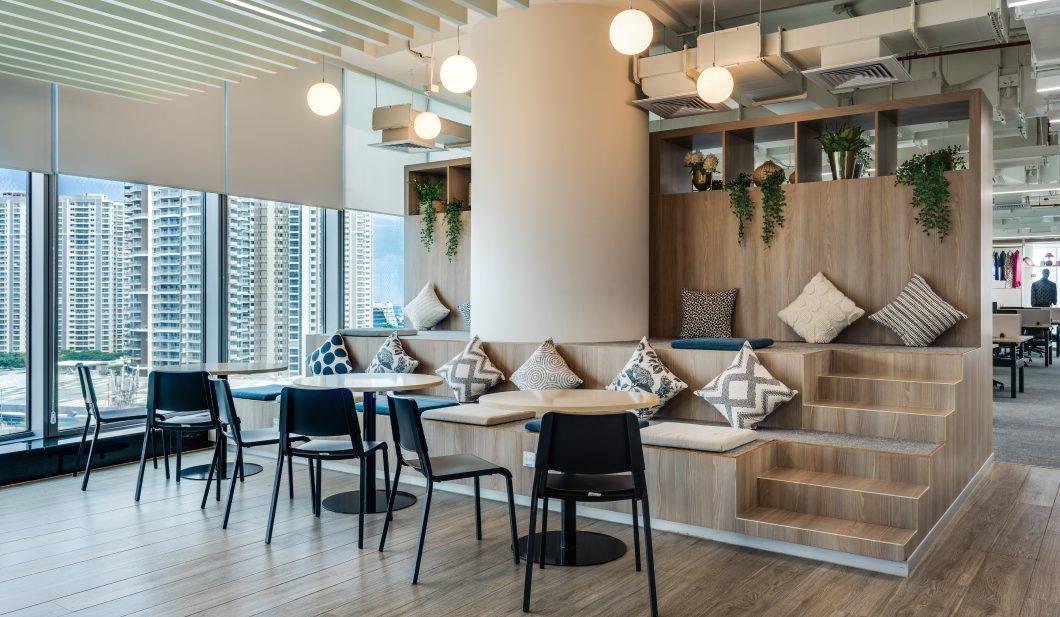
Combining these trends contributes significantly to Environmental, Social, and Governance (ESG) goals, paving the way for net-zero emissions and fostering sustainable ecosystems within workplaces. This approach aligns with the global shift towards sustainability, ensuring that workplaces not only meet today’s needs but also sustain future generations.
To Sum Up
As these trends converge, they not only redefine today’s workplaces but also align with broader sustainability goals, contributing to a more environmentally conscious and future-ready world. These transformative paradigms herald a new era—one where workplaces serve as ecosystems fostering well-being, innovation, and sustainability.
Welcome to the future of workplace design—a realm where spaces aren’t just functional but transformative, where design isn’t just aesthetic but purposeful.
Related Reads:
How Can Workplace Design Help Businesses Align ESG Goals Better?
Re-utilization and Optimization of the Workplace – The Sustainable Workplace


